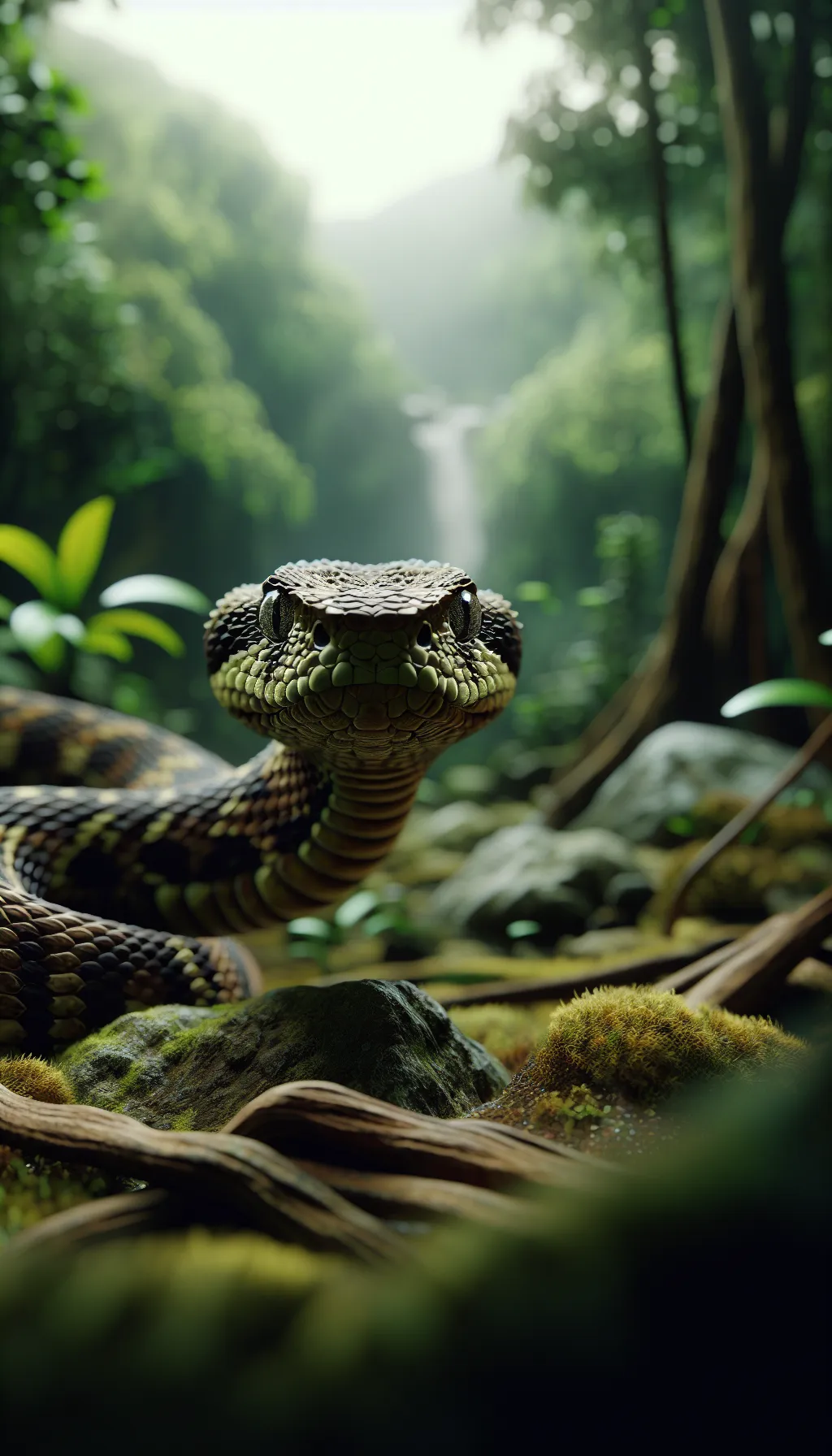The Russell's Viper
The Russell's Viper, a highly venomous snake found in South Asia, is known for its distinct triangular-shaped head and a light brown to reddish-brown body covered with darker brown blotches or bands. This snake can grow up to 5 feet in length and is notorious for its aggressive behavior when provoked, often hissing loudly before striking.

| Russell's Viper | |
|---|---|
| Size | Up to 5 feet (1.5 meters) |
| Weight | Up to 12 pounds (5.4 kilograms) |
| Speed | 1. 2.5 mph (4 km/h) 2. 7 mph (11 km/h) 3. 10 mph (16 km/h) 4. 15 mph (24 km/h) |
| Key Strength | Venomous bite |
| Biggest Weakness | Vulnerable under attack |
| Scientific Name | Daboia russelii |
| Family | Viperidae |
| Habitat | Grasslands and rocky areas |
| Geography | Found in South Asia |
| Diet | Rodents, birds, and frogs |
| Lifespan | 15 years - 20 years |

The Russell's Viper
The Russell's Viper, a highly venomous snake found in South Asia, is known for its distinct triangular-shaped head and a light brown to reddish-brown body covered with darker brown blotches or bands. This snake can grow up to 5 feet in length and is notorious for its aggressive behavior when provoked, often hissing loudly before striking.
Fun Fact: The venom of the Russell's Viper contains a combination of toxins that primarily affect the victim's blood, leading to issues like blood clotting disorders and tissue damage.
| Russell's Viper | |
|---|---|
| Size | Up to 5 feet (1.5 meters) |
| Weight | Up to 12 pounds (5.4 kilograms) |
| Speed | 1. 2.5 mph (4 km/h) 2. 7 mph (11 km/h) 3. 10 mph (16 km/h) 4. 15 mph (24 km/h) |
| Key Strength | Venomous bite |
| Biggest Weakness | Vulnerable under attack |
| Scientific Name | Daboia russelii |
| Family | Viperidae |
| Habitat | Grasslands and rocky areas |
| Geography | Found in South Asia |
| Diet | Rodents, birds, and frogs |
| Lifespan | 15 years - 20 years |
Russell's Viper Matchups
We use AI to simulate matchups between the Russell's Viper and other animals. Our simulation considers size, strength, and natural predatory behaviors to determine the most likely outcome.
Russell's Viper: Diet, Predators, Aggression, and Defensive Behaviors
What do Russell's Vipers eat?
Russell's Vipers are carnivorous snakes that primarily prey on small mammals like rodents, birds, lizards, and frogs. They are ambush predators, relying on their excellent sense of smell and heat-sensing pits to locate their prey before striking with speed and precision.
Do Russell's Vipers have any predators?
As adults, Russell's Vipers are apex predators in their ecosystem and have few natural predators. However, large birds of prey, mongoose, and other snakes may occasionally target young or smaller individuals. Humans also pose a threat to Russell's Vipers due to habitat destruction and intentional killing out of fear.
Are Russell's Vipers aggressive?
Russell's Vipers are known to be aggressive and defensive when threatened or cornered. They have a reputation for their quick strikes and potent venom, making them dangerous to encounter in the wild. It is essential to give them a wide berth and respect their space to avoid unnecessary conflicts.
Do Russell's Vipers fight?
Russell's Vipers are solitary and typically do not engage in fights with members of their own species except during the breeding season when males may engage in combat to establish dominance and access to females. These ritualized fights involve intertwining and wrestling, but serious injury is rare.
How do Russell's Vipers defend themselves?
Russell's Vipers have several defense mechanisms to protect themselves from potential threats. When threatened, they will adopt a defensive posture, coiling their bodies into an S-shape and hissing loudly to warn intruders. If provoked further, they will strike quickly and deliver a potent venomous bite to deter predators or perceived threats.
What is the biggest weakness of Russell's Vipers in a fight?
Despite their formidable reputation and potent venom, Russell's Vipers have a vulnerability when it comes to their behavior after delivering a bite. Unlike some other venomous snakes that can deliver multiple strikes in quick succession, Russell's Vipers have a slower venom replenishment rate, which means they may be less able to defend themselves in rapid succession in a fight.
Fun Fact: Despite its dangerous reputation, the Russell's Viper is also known for its important role in controlling rodent populations in its natural habitat, helping to keep these pests in check.
Fun Fact: When threatened, the Russell's Viper can deliver a quick series of rapid strikes, injecting venom with each bite, making it one of the most feared snakes in South Asia.










